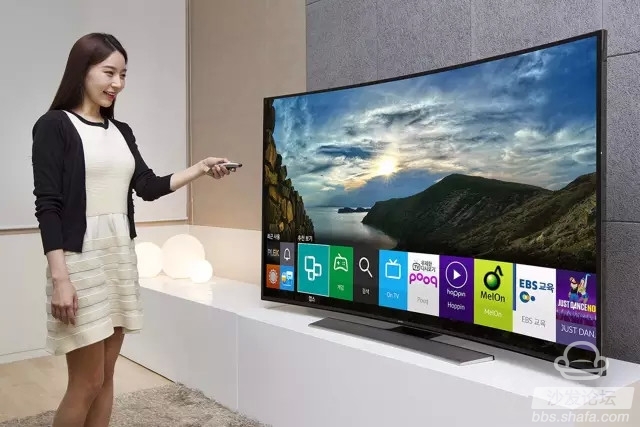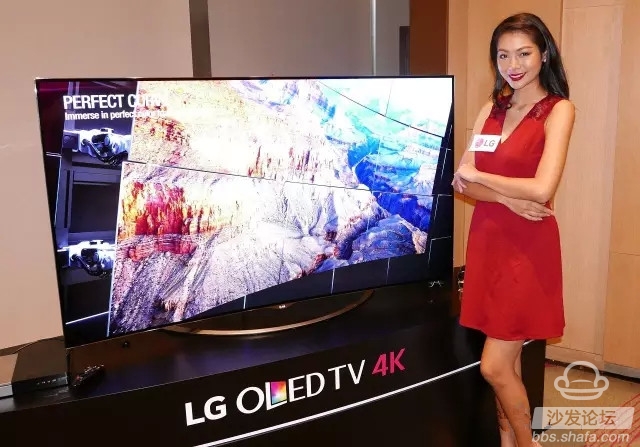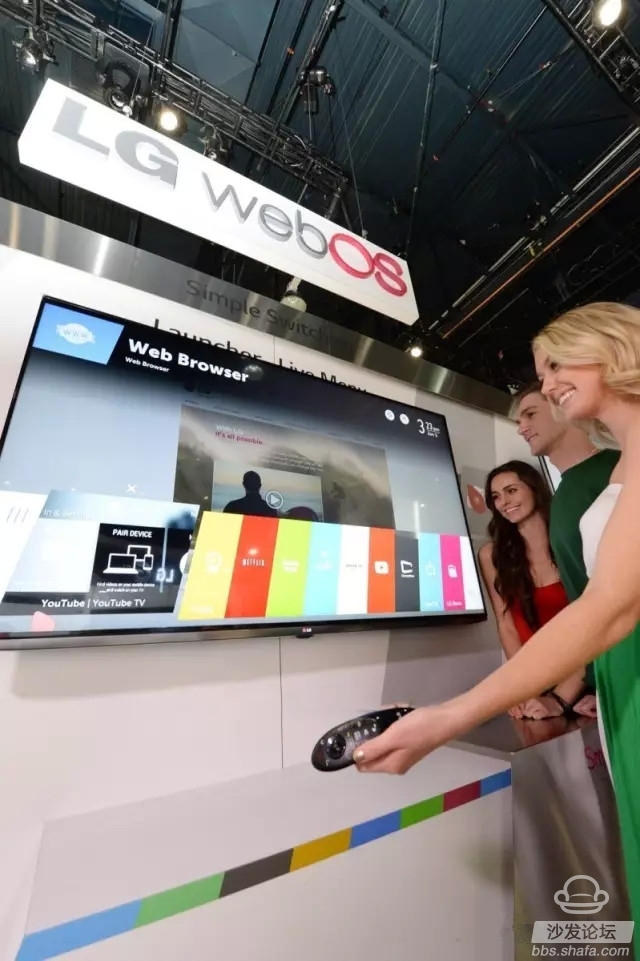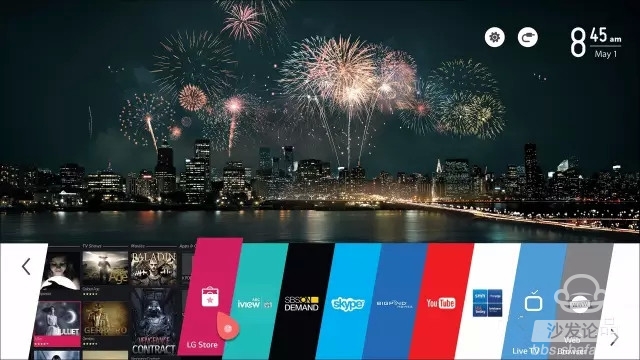Android TV
♪ On behalf of the brand: Sony
Sony officially adopted the world's best smart TV platform in 2015. As long as the relationship with Android, it will automatically alienate the other half of the world's smart phone users. However, Sony, together with other manufacturers, hopes that the remaining half of the users will accept Google's platform in their own living room. So far, only Sharp and Philips have taken the same steps using Google's Android TV system. It is difficult for us to determine whether the system will eventually win, but Android TV has performed well and has a good chance of success.
Not just TV, users can also find Android TV in devices like Nvidia SHIELD. Unlike other new smart TV platforms, Android TV service is not activated via icons located at the bottom of the screen. After pressing the Home button of the remote control, video titles from YouTube and Google Video will be scrolled on the screen. Below are links to other media services. Then the TV's input and setting options will be available. Sony's Android TV provides plenty of storage space. The 2015 version has a 16GB size, which is much larger than most smart TVs provide.
With the SideView app, Android phone and tablet users can use voice commands to directly control Sony TV. With Google Cast, users can stream videos and photos to a TV (iOS users can use the AirBuddy app to download). The handles from Logitech and Razer are said to provide users with a console-free gaming experience.
So far, Android TV is still a relatively high-end feature that can only be found on the W, S, and X series of Sony Bravia TVs. In July 2015, all Sony Android TV products will receive firmware updates to add a service called “YouViewâ€. With Sony TV and YouView, the performance of Sony Smart TV is worth the wait.


Firefox
♪ Representative Brand: Panasonic
Firefox is by far the most beautiful and easy to customize smart TV platform. In 2015, Panasonic made major updates to its smart TV interface and called the new interface "my Home Screen 2.0." This is actually the Firefox operating system.
Circular icons are displayed directly on the home screen without having to go to other pages to find. TVs, apps, devices, input, and specific channels are all easily accessible via icons. Moreover, this is by far the most easily customizable interface for users, and it takes only a few seconds to add their preferred applications or services. Although the homepage still exists, the layout is more concise, with only 14 applications on it.
At the front is Panasonic’s app market link, next to pre-loaded apps such as Netflix, Amazon Instant, YouTube, and some TV features and services such as calendars, input, channels, and web browsers – as you can imagine, sure Is Firefox browser.
Since there is no built-in Google Play, the Firefox system cannot be compared with Android TV in terms of content, but Panasonic's Firefox operating system is not subject to regulatory restrictions and is very easy to customize. This is by far the most beautiful and easy to use smart TV interface.


Smart Center with Tizen
♪ On behalf of the brand: Samsung
Although Samsung still calls it "Smart Hub Smart Center," this smart TV platform is a new system that Samsung launched in 2015. Various applications and shortcuts are located in the horizontal dynamic icons at the bottom of the screen. The system can not only track the user's habits, but also recommend new videos and allow proper customization. The “Most Visited†feature on the left side of the screen provides quick access to recently used apps and channels.
Customized screen icons are very good at functioning, and users can place the functions and applications that they need to use everyday. The smart center's multimedia page not only distinguishes between applications and content, but also differentiates the difference in content sources.
In addition, although it is no longer in a prominent position directly in front of it, the Samsung application panel will still list all download applications. At the same time, the Tizen-based Smart Center also offers a few excellent features, such as browsing applications while watching live shows on a split-screen.
 WebOS
WebOS
♪ on behalf of the brand: LG
LG launched WebOS in 2014 and has completely updated its smart TV. Today, the 2.0 version of the operating system will also be available as a firmware update to all Smart TV products introduced in 2014 and 2015. Similar to the Samsung Smart Center, WebOS 2.0's task bar is located at the bottom of the screen.
The basic functions of a TV, whether it is a content service such as Netflix or HDMI input, are considered applications and appear dynamically at the bottom of the screen.
However, if you want to find some features that are not on the launch bar, users need to work hard and customization is just as difficult. Moreover, the unification of the different versions of WebOS in terms of design is very low, which will cause additional trouble for users.

Where is the future of domestic smart TVs?
From the issuance of Internet TV licenses to the critique of rectification of Internet TV boxes, from requesting cable TV companies to vigorously carry out TVOS 1.0 scale application trials to interviewing seven licensees, from the launch of the TVOS 2.0 smart TV operating system to the demonstration Will organize Alibaba and other companies to participate in TVOS R&D, and a series of recent actions by the SARFT has demonstrated its determination to govern online television and pushed the TVOS smart TV operating system to the forefront.
 01 Multi-screen interaction
01 Multi-screen interaction
Multi-screen interaction is now a very common feature of smart TVs. Simply speaking, it is on the screens of different devices that connect devices to each other for conversion. Specifically, there are functions such as mutual conversion between multiple screens and remote control of a mobile phone. TVOS will also have these features: it can both push the photo video on the mobile phone tablet to the large-screen TV, and can also transmit the large-screen TV content to the mobile platform for viewing, and realize the broadcast control of the mobile platform to the TV.
 02HTMLl5 support
02HTMLl5 support
HTML5 code is the future development direction of the Web. The first is the HTML5 language because of its rich labels when writing code has great simplicity, followed by good audio and video support to make the information more abundant, and finally it is very good The cross-platform usability makes it easy to port applications to other platforms.
 03 System Security
03 System Security
At present, many smart TV operating systems are based on open source Linux, integrated into the functions and applications of some Android systems, and also added security modules and drivers. These ensure the security of user information from the system software.
♪ On behalf of the brand: Sony
Sony officially adopted the world's best smart TV platform in 2015. As long as the relationship with Android, it will automatically alienate the other half of the world's smart phone users. However, Sony, together with other manufacturers, hopes that the remaining half of the users will accept Google's platform in their own living room. So far, only Sharp and Philips have taken the same steps using Google's Android TV system. It is difficult for us to determine whether the system will eventually win, but Android TV has performed well and has a good chance of success.
Not just TV, users can also find Android TV in devices like Nvidia SHIELD. Unlike other new smart TV platforms, Android TV service is not activated via icons located at the bottom of the screen. After pressing the Home button of the remote control, video titles from YouTube and Google Video will be scrolled on the screen. Below are links to other media services. Then the TV's input and setting options will be available. Sony's Android TV provides plenty of storage space. The 2015 version has a 16GB size, which is much larger than most smart TVs provide.
With the SideView app, Android phone and tablet users can use voice commands to directly control Sony TV. With Google Cast, users can stream videos and photos to a TV (iOS users can use the AirBuddy app to download). The handles from Logitech and Razer are said to provide users with a console-free gaming experience.
So far, Android TV is still a relatively high-end feature that can only be found on the W, S, and X series of Sony Bravia TVs. In July 2015, all Sony Android TV products will receive firmware updates to add a service called “YouViewâ€. With Sony TV and YouView, the performance of Sony Smart TV is worth the wait.


Firefox
♪ Representative Brand: Panasonic
Firefox is by far the most beautiful and easy to customize smart TV platform. In 2015, Panasonic made major updates to its smart TV interface and called the new interface "my Home Screen 2.0." This is actually the Firefox operating system.
Circular icons are displayed directly on the home screen without having to go to other pages to find. TVs, apps, devices, input, and specific channels are all easily accessible via icons. Moreover, this is by far the most easily customizable interface for users, and it takes only a few seconds to add their preferred applications or services. Although the homepage still exists, the layout is more concise, with only 14 applications on it.
At the front is Panasonic’s app market link, next to pre-loaded apps such as Netflix, Amazon Instant, YouTube, and some TV features and services such as calendars, input, channels, and web browsers – as you can imagine, sure Is Firefox browser.
Since there is no built-in Google Play, the Firefox system cannot be compared with Android TV in terms of content, but Panasonic's Firefox operating system is not subject to regulatory restrictions and is very easy to customize. This is by far the most beautiful and easy to use smart TV interface.


Smart Center with Tizen
♪ On behalf of the brand: Samsung
Although Samsung still calls it "Smart Hub Smart Center," this smart TV platform is a new system that Samsung launched in 2015. Various applications and shortcuts are located in the horizontal dynamic icons at the bottom of the screen. The system can not only track the user's habits, but also recommend new videos and allow proper customization. The “Most Visited†feature on the left side of the screen provides quick access to recently used apps and channels.
Customized screen icons are very good at functioning, and users can place the functions and applications that they need to use everyday. The smart center's multimedia page not only distinguishes between applications and content, but also differentiates the difference in content sources.
In addition, although it is no longer in a prominent position directly in front of it, the Samsung application panel will still list all download applications. At the same time, the Tizen-based Smart Center also offers a few excellent features, such as browsing applications while watching live shows on a split-screen.

♪ on behalf of the brand: LG
LG launched WebOS in 2014 and has completely updated its smart TV. Today, the 2.0 version of the operating system will also be available as a firmware update to all Smart TV products introduced in 2014 and 2015. Similar to the Samsung Smart Center, WebOS 2.0's task bar is located at the bottom of the screen.
The basic functions of a TV, whether it is a content service such as Netflix or HDMI input, are considered applications and appear dynamically at the bottom of the screen.
However, if you want to find some features that are not on the launch bar, users need to work hard and customization is just as difficult. Moreover, the unification of the different versions of WebOS in terms of design is very low, which will cause additional trouble for users.

Where is the future of domestic smart TVs?
From the issuance of Internet TV licenses to the critique of rectification of Internet TV boxes, from requesting cable TV companies to vigorously carry out TVOS 1.0 scale application trials to interviewing seven licensees, from the launch of the TVOS 2.0 smart TV operating system to the demonstration Will organize Alibaba and other companies to participate in TVOS R&D, and a series of recent actions by the SARFT has demonstrated its determination to govern online television and pushed the TVOS smart TV operating system to the forefront.

Multi-screen interaction is now a very common feature of smart TVs. Simply speaking, it is on the screens of different devices that connect devices to each other for conversion. Specifically, there are functions such as mutual conversion between multiple screens and remote control of a mobile phone. TVOS will also have these features: it can both push the photo video on the mobile phone tablet to the large-screen TV, and can also transmit the large-screen TV content to the mobile platform for viewing, and realize the broadcast control of the mobile platform to the TV.

HTML5 code is the future development direction of the Web. The first is the HTML5 language because of its rich labels when writing code has great simplicity, followed by good audio and video support to make the information more abundant, and finally it is very good The cross-platform usability makes it easy to port applications to other platforms.

At present, many smart TV operating systems are based on open source Linux, integrated into the functions and applications of some Android systems, and also added security modules and drivers. These ensure the security of user information from the system software.